
-
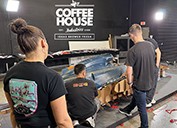 Coffee House Industries Builds the First McLaren x Allwyn "Scratch Car" in Collaboration with Designer Florian Weber
Coffee House Industries Builds the First McLaren x Allwyn "Scratch Car" in Collaboration with Designer Florian Weber -
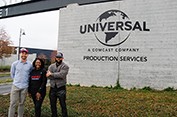 NEW ERA OF INDEPENDENT FILMMAKING IN ATLANTA
NEW ERA OF INDEPENDENT FILMMAKING IN ATLANTA -
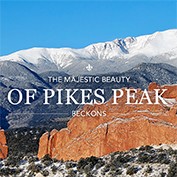 Retreat to the Mountain, Return to Yourself
Retreat to the Mountain, Return to Yourself -
 Five most common mistakes made by Producers......and how to avoid them!
Five most common mistakes made by Producers......and how to avoid them! -
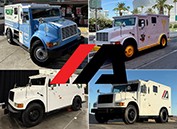 Malibu Autobahn Puts Its Armored Truck to the Test
Malibu Autobahn Puts Its Armored Truck to the Test -
 Announcing the BVA Final 2025 Auction!
Announcing the BVA Final 2025 Auction! -
 New Arrivals
New Arrivals -
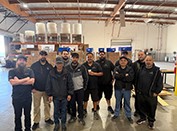 SmartSource Los Angeles Expands to New Facility
SmartSource Los Angeles Expands to New Facility -
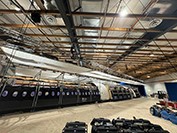 Shoot Aviation Widebody for Apple TV's PLURIBUS
Shoot Aviation Widebody for Apple TV's PLURIBUS -
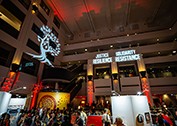 4Wall & Metro Media Productions Illuminate CNA's Global Nurses Solidarity Assembly
4Wall & Metro Media Productions Illuminate CNA's Global Nurses Solidarity Assembly -
 The Lot at Formosa Wins Corporate Innovation Award
The Lot at Formosa Wins Corporate Innovation Award -
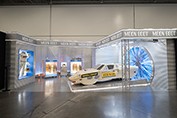 Coffee House Industries Brings MOONBOOT at ComplexCon Las Vegas
Coffee House Industries Brings MOONBOOT at ComplexCon Las Vegas -
 The Board Patrol now carries Sand & Grass Protectors
The Board Patrol now carries Sand & Grass Protectors -
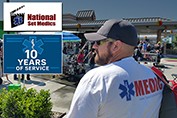 National Set Medics Celebrates 10 Years of Service!
National Set Medics Celebrates 10 Years of Service! -
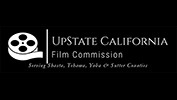 Fall Newsletter
Fall Newsletter
Production News & Events -
 In Memory of Otto Nemenz
In Memory of Otto Nemenz
(1941-2025)
A Legacy That Shaped Cinema -
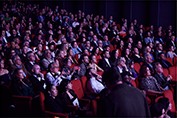 Submissions are Now Open for the Society of Camera Operators (SOC) Camera Operator of the Year Film and Television and will Open November 5th for Technical Achievement Awards
Submissions are Now Open for the Society of Camera Operators (SOC) Camera Operator of the Year Film and Television and will Open November 5th for Technical Achievement Awards -
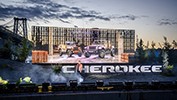 4Wall & GPJ Transform Domino Park for Historic Jeep Cherokee 2026 Reveal By 4Wall Entertainment
4Wall & GPJ Transform Domino Park for Historic Jeep Cherokee 2026 Reveal By 4Wall Entertainment -
 GALPIN IS PROUD TO INTRODUCE OUR
GALPIN IS PROUD TO INTRODUCE OUR
NEW Production Supply Manager
John Vargas -

-
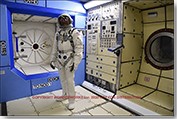 WonderWorks - Gateway To The Stars
WonderWorks - Gateway To The Stars -
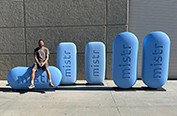 WLA3D Produces Large Scale Models for Company Launch
WLA3D Produces Large Scale Models for Company Launch -
 United Rentals Tool Solutions Powers Film & Production Communications
United Rentals Tool Solutions Powers Film & Production Communications -

-
 Coffee House Industries Helps Bring Six Flags Fright Fest to Life
Coffee House Industries Helps Bring Six Flags Fright Fest to Life -

-
 Newel Props, Film and TV Set Rentals in New York
Newel Props, Film and TV Set Rentals in New York -
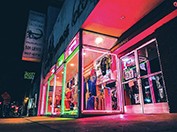 From store racks to your home screen...
From store racks to your home screen...
Iguana Vintage Clothing is LIVE on WhatNot! -
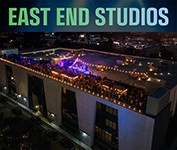
-
 Welcome to TCP Insurance: Trusted Coverage for the Creative Community
Welcome to TCP Insurance: Trusted Coverage for the Creative Community -
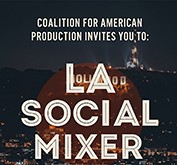
-
 From Sketch to Spotlight: Coffee House Industries Brings the Canelo vs. Crawford Belt Display to Life in Record Time
From Sketch to Spotlight: Coffee House Industries Brings the Canelo vs. Crawford Belt Display to Life in Record Time -
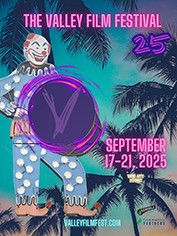 The 25th Annual Valley Festival is Here Again
The 25th Annual Valley Festival is Here Again -
 The Lot at Formosa: A Storied Studio's Next Chapter Unfolds
The Lot at Formosa: A Storied Studio's Next Chapter Unfolds -
 2025 EMERGING CINEMATOGRAPHER AWARDS - LOS ANGELES!
2025 EMERGING CINEMATOGRAPHER AWARDS - LOS ANGELES! -
 Producers are going BIG with Reel Monster Trucks
Producers are going BIG with Reel Monster Trucks -

-

-

-
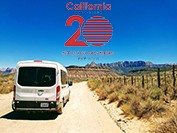 California Rent A Car's Studio Division celebrates its 20th anniversary!
California Rent A Car's Studio Division celebrates its 20th anniversary! -
 Showbiz Restrooms Brings Luxury to the Film Industry
Showbiz Restrooms Brings Luxury to the Film Industry -
 FILM READY AVIATION MOCKUPS
FILM READY AVIATION MOCKUPS -
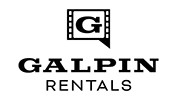 Here we Grow Again
Here we Grow Again -
 From Blueprint to Reality: Heck Yeah Productions Unveils 5,000 Sq. Ft. Event and Recording Space
From Blueprint to Reality: Heck Yeah Productions Unveils 5,000 Sq. Ft. Event and Recording Space -
 Quixote Provides Solar Power, Shared Smarter
Quixote Provides Solar Power, Shared Smarter -
 Lights! Camera! aaaand GOLDENS at All Animal Actors International
Lights! Camera! aaaand GOLDENS at All Animal Actors International -
 Baldwin Production Services San Francisco nominated for 2025 Cola Award
Baldwin Production Services San Francisco nominated for 2025 Cola Award -
 Summer 2025 Newsletter
Summer 2025 Newsletter -
 Keep Production in LA Industry Mixer Thursday Aug 21, 2024
Keep Production in LA Industry Mixer Thursday Aug 21, 2024 -
 Creative Handbooks to be Given Out at the Upcoming Location Managers Guild International Awards
Creative Handbooks to be Given Out at the Upcoming Location Managers Guild International Awards -

-
 Cape Town, Music Curation, Shout out & Podcast Interview VAMO
Cape Town, Music Curation, Shout out & Podcast Interview VAMO -
 Get One-Stop Shopping on Fabric Printing & Borderless Framing
Get One-Stop Shopping on Fabric Printing & Borderless Framing -
 OpenAI's New Browser Could Change the Internet Forever
OpenAI's New Browser Could Change the Internet Forever -
 Malibu Autobahn Rolls Through LA with Joseline Hernandez for Zeus Network
Malibu Autobahn Rolls Through LA with Joseline Hernandez for Zeus Network -
 Studio Animal Services, LLC - Kittens Available for Production
Studio Animal Services, LLC - Kittens Available for Production -
 Wireless Teleprompter Rig Takes to the Streets of Midtown Manhattan
Wireless Teleprompter Rig Takes to the Streets of Midtown Manhattan -

-
 New Everyday Low Prices on Rigging Hardware Take a Look at 20% Lower Prices on Average
New Everyday Low Prices on Rigging Hardware Take a Look at 20% Lower Prices on Average -
 Westside Digital Mix: Venice Edition
Westside Digital Mix: Venice Edition -
 Film in Palmdale
Film in Palmdale
Scenic Locations, Valuable Incentives -
 Los Angeles Properties for
Los Angeles Properties for
Filming, Events, Activations
Pop Ups and Photo -
 Burbank Stages can now be painted any color to match
Burbank Stages can now be painted any color to match -
 Custom Prop Rentals: Bringing Your Dream Event to Life with Life-Size Magic
Custom Prop Rentals: Bringing Your Dream Event to Life with Life-Size Magic -
 New Arrivals
New Arrivals -
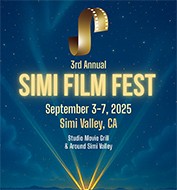
-
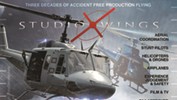 Studio Wings moves offices, flight operations and aircraft to the Santa Fe Airport
Studio Wings moves offices, flight operations and aircraft to the Santa Fe Airport -
 WeCutFoam Specializes in Fabrication of Signs, Logos and Letters for Company Summits
WeCutFoam Specializes in Fabrication of Signs, Logos and Letters for Company Summits -
 Studio Tech Provides Wi-Fi And Internet for The Superman Movie Press Junket
Studio Tech Provides Wi-Fi And Internet for The Superman Movie Press Junket -
 Superman movie Press Junket @ Buttercup Venues
Superman movie Press Junket @ Buttercup Venues -
 Honoring Stories Worth Telling Since 2009
Honoring Stories Worth Telling Since 2009
All Ages - All Cultures - All Media -
 Xenia Lappo Joins ESTA as New Program Manager for Membership & Events
Xenia Lappo Joins ESTA as New Program Manager for Membership & Events -
 Nathan Wilson and Chris Connors discuss creating for children's television with ZEISS Supreme Prime lenses
Nathan Wilson and Chris Connors discuss creating for children's television with ZEISS Supreme Prime lenses -
 Luxury Solar Restroom Trailer Sustainability
Luxury Solar Restroom Trailer Sustainability -
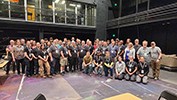 Midwest Rigging Intensive Returns with Touring Rigging Theme
Midwest Rigging Intensive Returns with Touring Rigging Theme -
 Custom Pool Floats That Steal the Show
Custom Pool Floats That Steal the Show -
 Malibu Autobahn Dresses Coachella 2025 for Shoreline Mafia
Malibu Autobahn Dresses Coachella 2025 for Shoreline Mafia -
 Thunder Studios Wins Nine 2025 Telly Awards
Thunder Studios Wins Nine 2025 Telly Awards -

-
 LCW Props Is Your One Stop Prop Shop
LCW Props Is Your One Stop Prop Shop -
 Venues in Los Angeles for Activations and Filming
Venues in Los Angeles for Activations and Filming -

-

-
 Honoring Stories Worth Telling Since 2009 - All Ages - All Cultures - All Media
Honoring Stories Worth Telling Since 2009 - All Ages - All Cultures - All Media -
 Buttercup Venues Accepting Submissions to Help Property Owners Monetize Their Spaces
Buttercup Venues Accepting Submissions to Help Property Owners Monetize Their Spaces -
 Studio Animal Services Stars in Latest Fancy Feast Commercial
Studio Animal Services Stars in Latest Fancy Feast Commercial -
 WDM celebrates Summer at the famed Michael's Santa Monica
WDM celebrates Summer at the famed Michael's Santa Monica -
 Studio Technical Services Inc.
Studio Technical Services Inc.
Spring 2025 Newsletter -
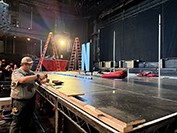 From Call to Setup: Coffee House Industries Lights Up Netflix Is a Joke at the Avalon
From Call to Setup: Coffee House Industries Lights Up Netflix Is a Joke at the Avalon -
 WLA3D produces scale model for Fox Grip
WLA3D produces scale model for Fox Grip -
 Filming Locations and Event Venues Los Angeles
Filming Locations and Event Venues Los Angeles -
 Scenic Expressions Launches a Full-Service Liquidation Solution for the Film & TV Industry
Scenic Expressions Launches a Full-Service Liquidation Solution for the Film & TV Industry -
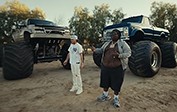 Producers Need Reel Monster Trucks for Reel Productions
Producers Need Reel Monster Trucks for Reel Productions -
 Meet Michael Way | Engineer
Meet Michael Way | Engineer -
 In Development: ZEISS Virtual Lens Technology Elevating VFX with physically based lens effects
In Development: ZEISS Virtual Lens Technology Elevating VFX with physically based lens effects -
 (2) PREMIER AV ACTIONS
(2) PREMIER AV ACTIONS -
 RSVP - 80 Films & Tech - Meet the Visionaries - EMMY, Telly, Peabody winners and more
RSVP - 80 Films & Tech - Meet the Visionaries - EMMY, Telly, Peabody winners and more -
 New Arrivals Are Here - Check Out LMTreasures.com
New Arrivals Are Here - Check Out LMTreasures.com -
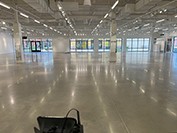 Film-Friendly Retail Space at Tejon Outlets
Film-Friendly Retail Space at Tejon Outlets -
 Behind Every Great Production, There's a Great Move
Behind Every Great Production, There's a Great Move -
 Buttercup Venues' recent work with Invisible Dynamics & Blue Revolver
Buttercup Venues' recent work with Invisible Dynamics & Blue Revolver -
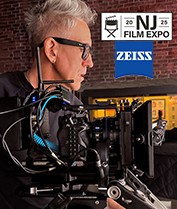 Join ZEISS Cinema at this year's NJ Film Expo on Thursday, May 1
Join ZEISS Cinema at this year's NJ Film Expo on Thursday, May 1 -
 The Location Managers Guild International (LMGI) announces that its 12th Annual LMGI Awards Show will be held on Saturday, August 23, 2025
The Location Managers Guild International (LMGI) announces that its 12th Annual LMGI Awards Show will be held on Saturday, August 23, 2025 -
 Get Your Production Supplies Now While Prices Are Stable*
Get Your Production Supplies Now While Prices Are Stable*
Rose Brand Is Your One Stop Shop -
 Immersive Sound for your next production from TrueSPL
Immersive Sound for your next production from TrueSPL -
 WeCutFoam Fabricating Large Scale Props and Decor for Companies & Products Launching Events
WeCutFoam Fabricating Large Scale Props and Decor for Companies & Products Launching Events -
 The "CA-Creates" eGroup Network
The "CA-Creates" eGroup Network -
 The Location Managers Guild International Announces the Newly Elected 2025 LMGI Board of Directors
The Location Managers Guild International Announces the Newly Elected 2025 LMGI Board of Directors -
 Production Moves: How to Find the Most Qualified Mover
Production Moves: How to Find the Most Qualified Mover -
 SAG-AFTRA Talent Payments @ Production Payroll Services
SAG-AFTRA Talent Payments @ Production Payroll Services -

-

-
 New Everyday Low Prices on Rigging Hardware
New Everyday Low Prices on Rigging Hardware
Take a Look at 20% Lower Prices on Average -
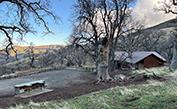 Tejon Ranch introduces its Premium Ranch Cabins
Tejon Ranch introduces its Premium Ranch Cabins -
 Our Enchanting Garden Collection is Growing!
Our Enchanting Garden Collection is Growing! -

-

-
 Top Entertainment CEOs & Industry Titans Join Forces for Groundbreaking New Media Film Festival®
Top Entertainment CEOs & Industry Titans Join Forces for Groundbreaking New Media Film Festival® -
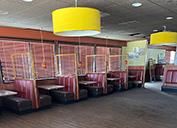 Tejon Ranch opens Diner location for your next Production
Tejon Ranch opens Diner location for your next Production -
 Discover the Performance of ZEISS Otus ML
Discover the Performance of ZEISS Otus ML
Deep Dive into the Features and Technology -
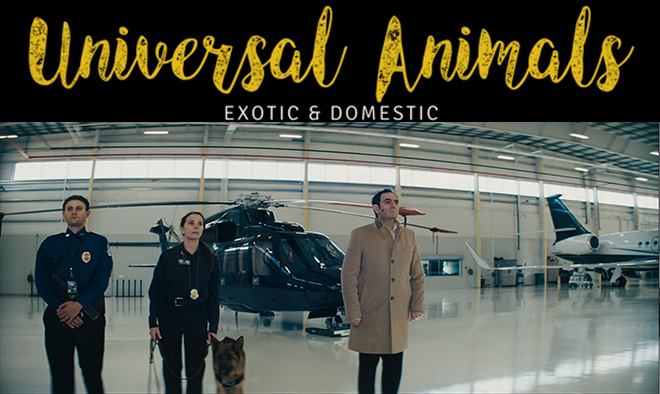 Universal Animals cast the dog in Anora!
Universal Animals cast the dog in Anora! -
 Burbank Stages is Now Open with upgraded support space
Burbank Stages is Now Open with upgraded support space -

-
 Buttercup Venues Grows Portfolio with Exciting New Locations for Filming and Events
Buttercup Venues Grows Portfolio with Exciting New Locations for Filming and Events -
 Fashion District Suite 301
Fashion District Suite 301 -
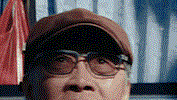 Something new is coming for Photographers
Something new is coming for Photographers
Mark Your Calendar - February 25th -
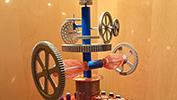 WLA3D completes scale model of vintage Knott's Berry Farm attraction
WLA3D completes scale model of vintage Knott's Berry Farm attraction -
 New Media Film Festival has invited you to submit your work via FilmFreeway!
New Media Film Festival has invited you to submit your work via FilmFreeway! -
 WeCutFoam Collaborated Once More with Children's Miracle Network Hospitals
WeCutFoam Collaborated Once More with Children's Miracle Network Hospitals -

-
 EigRig SLIDE-R1 Revolutionizes Filmmaking Production with Innovation
EigRig SLIDE-R1 Revolutionizes Filmmaking Production with Innovation -
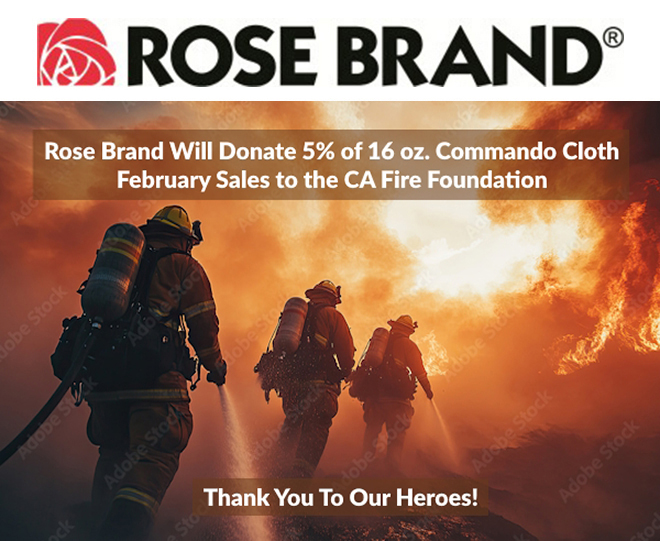
-

-

-
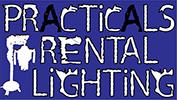 Practicals Rental Lighting Welcomes the Jucolor UV Flatbed Printer
Practicals Rental Lighting Welcomes the Jucolor UV Flatbed Printer -
 GBH Maintenance Inc. Has Grown
GBH Maintenance Inc. Has Grown -
 The Rarest Stars Shine Brightest
The Rarest Stars Shine Brightest -
 Affected by the ongoing California wildfires
Affected by the ongoing California wildfires -
 Get One-Stop Shopping...
Get One-Stop Shopping... -
 Buttercup Venues Expands
Buttercup Venues Expands -
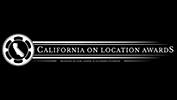
-
 Los Angeles Office Spaces: Versatile Backdrops for Filming
Los Angeles Office Spaces: Versatile Backdrops for Filming -
 All Creatures Great and small holiday commercial for Montefiore hospital
All Creatures Great and small holiday commercial for Montefiore hospital -
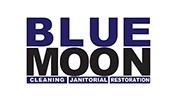 DEEP CLEANS WAREHOUSE FOR SUPER BOWL COMMERCIAL
DEEP CLEANS WAREHOUSE FOR SUPER BOWL COMMERCIAL -
 New Production Hub in Los Angeles
New Production Hub in Los Angeles -
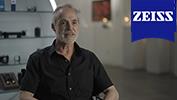 Carlos R. Diazmuñoz
Carlos R. Diazmuñoz -
 WeCutFoam Specializes in Decor
WeCutFoam Specializes in Decor -
 Studio Technical Services Inc.
Studio Technical Services Inc.
Fall 2024 Update -
 New Media Film Festival has invited you to submit your work
New Media Film Festival has invited you to submit your work -

-
 Available again!
Available again!
Studio 301 - 16,000 Sq. Ft. -
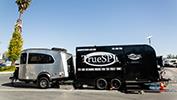 Elevate Your Production with SoundPressure Labs'
Elevate Your Production with SoundPressure Labs' -
 Pro-Cam expands rental operation...
Pro-Cam expands rental operation... -
 NATIONAL ASSOCIATION OF LATINO INDEPENDENT PRODUCERS
NATIONAL ASSOCIATION OF LATINO INDEPENDENT PRODUCERS -
 New Sony A9 III Reviews
New Sony A9 III Reviews -
 New, Heavyweight, Lustrous, Shimmering 56" Elana IFR Fabric
New, Heavyweight, Lustrous, Shimmering 56" Elana IFR Fabric -
 JOIN US IN ORLANDO THIS NOVEMBER!
JOIN US IN ORLANDO THIS NOVEMBER! -
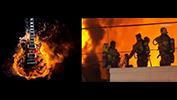 BLUE MOON CLEANING
BLUE MOON CLEANING
RESTORES MUSIC-MAKING -
 Another Collaboration Between WeCutFoam and Event Planner
Another Collaboration Between WeCutFoam and Event Planner -
 BLUE MOON CONGRATULATES 2024 COLA FINALISTS
BLUE MOON CONGRATULATES 2024 COLA FINALISTS -
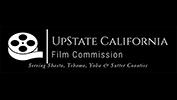 Fall Production News & Events
Fall Production News & Events -
 Not just green, but mighty Verde
Not just green, but mighty Verde -
 Introducing...
Introducing...
Restaurant/Bar/Venue in Encino -

-
 ESTA and Earl Girls, Inc. Launch $100,000 TSP Fundraising Challenge
ESTA and Earl Girls, Inc. Launch $100,000 TSP Fundraising Challenge -
 There's still time to register for ESTA's Plugfest
There's still time to register for ESTA's Plugfest -

-
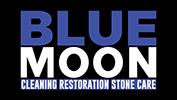 BLUE MOON CLEANING SEES SPIKE IN MAJOR LA FEATURE FILMING
BLUE MOON CLEANING SEES SPIKE IN MAJOR LA FEATURE FILMING -

Amoeba Records on Sunset
&
SuperMarket in K-Town -
 "Alice in Wonderland" tea party brought to life...
"Alice in Wonderland" tea party brought to life... -
 Filming With Production Ready Aviation Equipment
Filming With Production Ready Aviation Equipment -

-
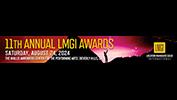
-
 A5 Events - Take Your Event to The Next Level
A5 Events - Take Your Event to The Next Level -
 The Original Amoeba Records Venue
The Original Amoeba Records Venue
& The SuperMarket -
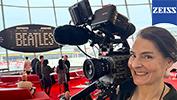 Doc Filmmaker Jennifer Cox
Doc Filmmaker Jennifer Cox -
 Red, White or Blue Rental Drapes
Red, White or Blue Rental Drapes -
 Introducing Tuck Track Invisible Framing for Fabric Prints
Introducing Tuck Track Invisible Framing for Fabric Prints -

-
 American Movie Company's LED Wall Studio Sale
American Movie Company's LED Wall Studio Sale -
 Black 360 Independence Studio
Black 360 Independence Studio -
 Nominations are open for the 2025 ESTA Board of Directors!
Nominations are open for the 2025 ESTA Board of Directors! -
 Custom Prop Rentals is moving to a new, larger location!
Custom Prop Rentals is moving to a new, larger location! -
 Pro-Cam opens Las Vegas branch, expanding rental operation
Pro-Cam opens Las Vegas branch, expanding rental operation -
 New ShowLED Starlight Drops
New ShowLED Starlight Drops -
 Costume House Sidewalk Sale
Costume House Sidewalk Sale -
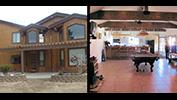 Working Wildlife's newly renovated 60 acre ranch available for Filming
Working Wildlife's newly renovated 60 acre ranch available for Filming -
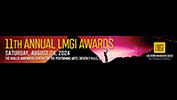 Location Manager Bill Bowling
Location Manager Bill Bowling
to Receive the Trailblazer Award -

-
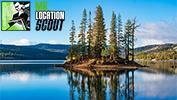 Mr. Location Scout is in Lake Tahoe
Mr. Location Scout is in Lake Tahoe -
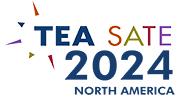 DreamMore Resort Fountain
DreamMore Resort Fountain -
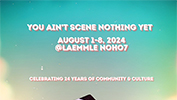 Valley Film Festival
Valley Film Festival
Greetings from the (818): -
 2024 Changemaker Awards and Artist Development Showcase
2024 Changemaker Awards and Artist Development Showcase -
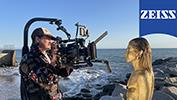 ZEISS Conversations with Jack Schurman
ZEISS Conversations with Jack Schurman -
 Collaboration Between WeCutFoam and Yaamava Resort & Casino
Collaboration Between WeCutFoam and Yaamava Resort & Casino -
 Location Managers Guild International Awards
Location Managers Guild International Awards -
 Molding Cloth
Molding Cloth
Make Fabulous Textured Designs -
 WeCutFoam Specializes in Large Events
WeCutFoam Specializes in Large Events -
 Introducing Truck Track Invisible Framing for Fabric Prints
Introducing Truck Track Invisible Framing for Fabric Prints -
 GBH Maintenance is back at Herzog Wine Cellars
GBH Maintenance is back at Herzog Wine Cellars -
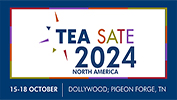 SATE NORTH AMERICA 2024
SATE NORTH AMERICA 2024 -
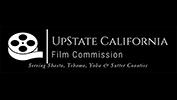 Production News & Events Summer Edition
Production News & Events Summer Edition -
 Four Amazing Architectural Locations!
Four Amazing Architectural Locations! -
 * BIG SAVINGS * ON BIG STUDIOS
* BIG SAVINGS * ON BIG STUDIOS -
 Let Your Brand Stand Tall!
Let Your Brand Stand Tall! -
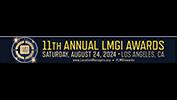 Sue Quinn to Receive Lifetime Achievement Award
Sue Quinn to Receive Lifetime Achievement Award -
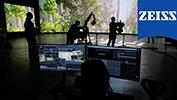 ZEISS Cinema at Filmscape Chicago
ZEISS Cinema at Filmscape Chicago -
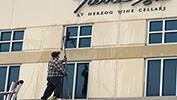 GBH Maintenance Is the Standard for Commercial Maintenance
GBH Maintenance Is the Standard for Commercial Maintenance -
 Come Join Us at Cine Gear Expo 2024
Come Join Us at Cine Gear Expo 2024 -
 Available now:
Available now:
6th Street Gallery & Venue -
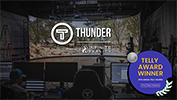 Thunder Studios Triumphs with Five Telly Awards
Thunder Studios Triumphs with Five Telly Awards -
 Reddit Went Public IPO - WeCutFoam Was There With Decor
Reddit Went Public IPO - WeCutFoam Was There With Decor -
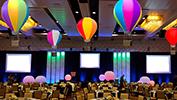 AirDD's Hottest New Product
AirDD's Hottest New Product
for 2024 Events -
 GBH Maintenance Sets the Standard for Window Cleaning
GBH Maintenance Sets the Standard for Window Cleaning -
 Haigwood Studios collaboration with the UGA Dodd School of Art
Haigwood Studios collaboration with the UGA Dodd School of Art -

-
 RX GOES TO 11!
RX GOES TO 11!
with Mike Rozett -
 Don't Be A Square - Think Outside The Box!!
Don't Be A Square - Think Outside The Box!! -
 WeCutFoam Fabricates Realistic Lifesize Props
WeCutFoam Fabricates Realistic Lifesize Props -

-
 Exposition Park Stage/Venue
Exposition Park Stage/Venue -
 Production Update From UpState California Film Commission
Production Update From UpState California Film Commission -
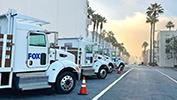 Base Camp With All The Extras
Base Camp With All The Extras -
 LAPPG AT THE ZEISS CINEMA SHOWROOM
LAPPG AT THE ZEISS CINEMA SHOWROOM -
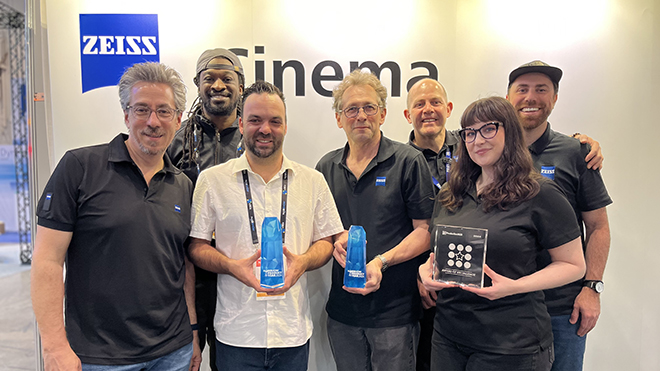 ZEISS Nano Primes and ZEISS CinCraft Scenario Received NAB Show 2024
ZEISS Nano Primes and ZEISS CinCraft Scenario Received NAB Show 2024 -
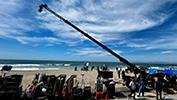 Cranium Camera Cranes Introduces the all new Tankno Crane!
Cranium Camera Cranes Introduces the all new Tankno Crane! -
 Come Join Us at Cine Gear Expo 2024
Come Join Us at Cine Gear Expo 2024 -
 FAA Drill Burbank Airport
FAA Drill Burbank Airport
(federal aviation administration) -
 Exclusive Stahl Substitute Listing from Toni Maier-On Location, Inc.
Exclusive Stahl Substitute Listing from Toni Maier-On Location, Inc. -
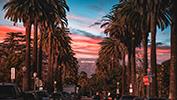 GBH Maintenance: Elevating Janitorial Standards Across Los Angeles
GBH Maintenance: Elevating Janitorial Standards Across Los Angeles -
 LOCATION CONNECTION has the best RANCHES FOR FILMING!
LOCATION CONNECTION has the best RANCHES FOR FILMING! -
 Hollywood Studio Gallery has Moved
Hollywood Studio Gallery has Moved -
 AirDD's inflatable "Kraken" designs transformed Masked Singers
AirDD's inflatable "Kraken" designs transformed Masked Singers -
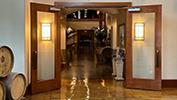 GBH maintenance Provided a Hollywood Shine for Herzog Wine Cellars
GBH maintenance Provided a Hollywood Shine for Herzog Wine Cellars -
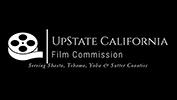 Production News & Events
Production News & Events
Spring Newsletter -
 Immersive Venue/ Black Box/ Stage
Immersive Venue/ Black Box/ Stage
2024 DTLA Arts District -

-
 Exclusive Malibu Listing from Toni Maier - On Location, Inc.
Exclusive Malibu Listing from Toni Maier - On Location, Inc. -
 Empowered Collaborates with Harlequin Floors
Empowered Collaborates with Harlequin Floors -
 Movie Premiere, TCL Chinese Theater
Movie Premiere, TCL Chinese Theater -
 Studio Tech provides services for the Grammy House
Studio Tech provides services for the Grammy House -
 Sora AI Text To Video
Sora AI Text To Video -
 New Apex Photo Studios
New Apex Photo Studios
Website: Rent Smarter, Create More & earn rewards! -

-
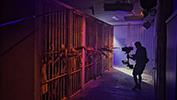 How Ideal Sets Founder Harry Hou Cracked the Code on Affordable Standing Sets
How Ideal Sets Founder Harry Hou Cracked the Code on Affordable Standing Sets -
 New Storage & Co-Working Spaces In Boyle Heights near Studios
New Storage & Co-Working Spaces In Boyle Heights near Studios
For Short or long term rental -
 Auroris X Lands at A Very Good Space
Auroris X Lands at A Very Good Space -
 GBH Maintenance Completes Work on 33000ft Production Space
GBH Maintenance Completes Work on 33000ft Production Space -
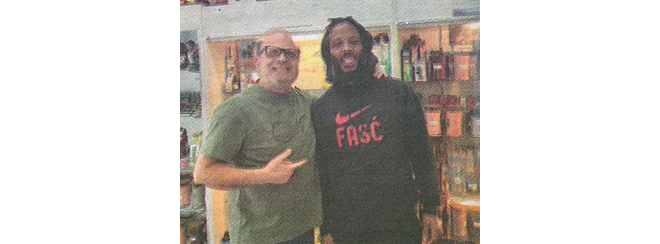 MUSICIAN ZIGGY MARLEY IS ANOTHER HAPPY.CUSTOMER OF MAILBOX TOLUCA LAKE'S 'DR. VOICE'
MUSICIAN ZIGGY MARLEY IS ANOTHER HAPPY.CUSTOMER OF MAILBOX TOLUCA LAKE'S 'DR. VOICE' -
 Custom Digitally Printed Commencement Banners & Backdrops
Custom Digitally Printed Commencement Banners & Backdrops -
 Rose Brand, SGM, Bill Sapsis, Sapsis Rigging, and Harlequin Floors Sponsor NATEAC Events
Rose Brand, SGM, Bill Sapsis, Sapsis Rigging, and Harlequin Floors Sponsor NATEAC Events -
 Kitty Halftime Show air for Animal Planet's Puppy Bowl
Kitty Halftime Show air for Animal Planet's Puppy Bowl -
 Georgia Animal Actors Persents Merlin
Georgia Animal Actors Persents Merlin -
 ESTA Launches Revamped NATEAC Website
ESTA Launches Revamped NATEAC Website -
 Mollie's Locations
Mollie's Locations -
 ZEISS Cinema News for February
ZEISS Cinema News for February -

-
 Seamless Fabric Backdrops up to 140ft x 16ft, Printed Floors...
Seamless Fabric Backdrops up to 140ft x 16ft, Printed Floors... -
 Check out all the Pioneer Gear at Astro!
Check out all the Pioneer Gear at Astro! -
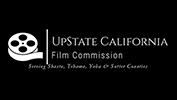 Production News & Events
Production News & Events -
 All of Your Production Supplies Gathered in Just One Place
All of Your Production Supplies Gathered in Just One Place -
 Meet the RED V-Raptor [X]
Meet the RED V-Raptor [X] -
 Sit Back and Enjoy Some Laughs
Sit Back and Enjoy Some Laughs -
 Mr. Location Scout Scouted and Managed Locations
Mr. Location Scout Scouted and Managed Locations -
 Introducing...
Introducing...
Landmark Restaurant in Encino -
 The White Owl Studio is celebrating all that is new!
The White Owl Studio is celebrating all that is new! -

-
 Last Call for NATEAC 2024 Proposals
Last Call for NATEAC 2024 Proposals -
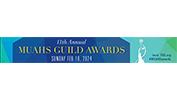 NOMINATIONS ANNOUNCED FOR THE
NOMINATIONS ANNOUNCED FOR THE
2024 MUAHS -
 Voted Best New Stage Rigging Products at LDI 2023
Voted Best New Stage Rigging Products at LDI 2023 -
 NEED MORE SPARKLE IN THE FLOOR?
NEED MORE SPARKLE IN THE FLOOR? -
 David Panfili to Appoint Michael Paul as President of Location Sound Corp.
David Panfili to Appoint Michael Paul as President of Location Sound Corp.
industry news
The Latest Industry News for the Exciting World of Production.
Creative Handbook puts together a bi-monthly newsletter featuring
up-to-date information on events, news and industry changes.
Add My Email
Everest: Disaster movie opens Venice film festival
By: Emma Jones | September 8,2015
Email This Article |  |
| 

Long before and after its summit was first officially conquered in 1953, scaling Everest, the world's highest peak, has been the ultimate dream of many mountaineers. Too often though, they have paid the ultimate price - more than 250 climbers are known to have died on its slopes.
On May 11 1996, eight climbers from several expeditions were killed during a severe blizzard as they returned from the summit. The movie of their story, also called Everest, and starring Jake Gyllenhaal, Keira Knightley, Josh Brolin and Zero Dark Thirty's Jason Clarke, has opened the Venice International Film Festival.
Gyllenhaal, who plays an expedition leader, Scott Fischer, calls it "the antithesis of a Hollywood disaster movie where it's all about surviving".
He continues: "This is an odyssey in the sense that you have to get home as well, and experienced climbers know that getting down from Everest is often more dangerous than getting up.
"In real life, Mother Nature is almost always going to win, so it's not like in a typical film where a human or a superhuman beats all the odds, and that makes it a bit more real."
The film was conceived by British production company Working Title, and shot in 3D; but despite its blockbuster potential, Everest's budget was around $70m (�45m), roughly the same as last year's Sin City: A Dame To Kill For.
The film's director, Icelandic filmmaker Baltasar Kormakur, was mainly known outside Europe for 2013 police movie 2 Guns, starring Denzel Washington.
Actor Josh Brolin jokes that it was his "midlife crisis" that got him involved in the project, adding that, "at the time I needed something like this in my life. I needed to be confronted with something more than the psychological roles I've done, I needed the physical as well.
"A lot of the preparation was putting myself in very precarious situations, but through that I discovered adventure. This redefined me."
But if that suggests the actors' safety was ever put at risk, director Kormakur denies he ever put his cast and crew into danger. Although he admits to facing "perilous situations every day. We shot at first in the foothills of Everest, we landed at Kathmandu, the world's most dangerous airport, and from there we basically walked to base camp.
"We had the support of Sherpas, and yaks carrying the packs. But you can't work a twelve hour day at that altitude without difficulty. Crew, actors, and even the Sherpas were starting to get sick and eventually had to be evacuated by helicopter. From there we went to the Dolomites and shot in temperatures of minus 30 degrees Celsius.
"I would say I put everyone through pain but not injury - no one went foolishly into danger. The struggle wouldn't be worth much however if the story of these climbers were not handled in a truthful manner."
The tragic events of May 11, 1996 made global headlines - that year would produce the worst death toll on Everest until the avalanche of 2014, which killed sixteen Nepalese guides.
But there is still much confusion around the doomed expedition led by Rob Hall, from New Zealand-based Adventure Consultants, and Scott Fischer from Mountain Madness in Seattle.
They led their teams towards the summit in clear skies. On the way down, a violent storm hit them as they tried to scale a 40 foot wall known as Hillary Step, after Everest's first official conqueror, Sir Edmund Hillary.
Rob Hall spent two nights exposed on the South Summit, unable to make the descent himself, and unable to be rescued from below. Jason Clarke, who plays him, calls the story " a great monumental whodunit, as we still don't truly know the chain of events that led to the tragedy. Yet holds up by itself; we don't need a Hollywood ending and it's not sentimental."
But the film does point towards the fact that there were 34 climbers from different expeditions trying to get to the top that day, 29,000 feet above sea level; the cruising level of a 747 jet.
"It's very odd to think that you would be waiting to get to the peak of Everest, that there could be scores of people on a rope queuing like they were in an amusement park," explains Jake Gyllenhaal.
"The top of the mountain is known as the Death Zone for a reason - your body is shutting down and dying. People don't get to the top and party, they go straight back down. There are more difficult climbs in the world, but on Everest, you struggle with suffocation and losing air. Human beings just aren't meant to survive at that altitude, and that's why you have the death rate.
"Even at the heights we got to, we experienced symptoms of sickness and our brains not functioning as they should."
Since its premiere, Everest has received mixed reviews, with the Guardian calling it "a disaster movie that isn't a total success", while Time Out praises it "for leaving you breathless."
In recent years, the opening film at Venice, which has included last year's Oscar-winner Birdman, Alfonso Cuaron's Gravity and Darren Aronofsky's Black Swan, has reaped rewards during awards season.
Brolin dismisses any official recognition as "not the reason any of us did this. We all met the survivors' families and spent time with them; we know they are pleased with the movie and the way we have depicted their loved ones.
"This is the story of people trying to tackle something impossible. The question comes up - why? Why would you ever put yourself in that situation? As someone once remarked, 'because it's there'.
"But I think also it must be because those who do reach the top get to experience an unique and singular beauty at the top of the world that very few others get to share."
On May 11 1996, eight climbers from several expeditions were killed during a severe blizzard as they returned from the summit. The movie of their story, also called Everest, and starring Jake Gyllenhaal, Keira Knightley, Josh Brolin and Zero Dark Thirty's Jason Clarke, has opened the Venice International Film Festival.
Gyllenhaal, who plays an expedition leader, Scott Fischer, calls it "the antithesis of a Hollywood disaster movie where it's all about surviving".
He continues: "This is an odyssey in the sense that you have to get home as well, and experienced climbers know that getting down from Everest is often more dangerous than getting up.
"In real life, Mother Nature is almost always going to win, so it's not like in a typical film where a human or a superhuman beats all the odds, and that makes it a bit more real."
The film was conceived by British production company Working Title, and shot in 3D; but despite its blockbuster potential, Everest's budget was around $70m (�45m), roughly the same as last year's Sin City: A Dame To Kill For.
The film's director, Icelandic filmmaker Baltasar Kormakur, was mainly known outside Europe for 2013 police movie 2 Guns, starring Denzel Washington.
Actor Josh Brolin jokes that it was his "midlife crisis" that got him involved in the project, adding that, "at the time I needed something like this in my life. I needed to be confronted with something more than the psychological roles I've done, I needed the physical as well.
"A lot of the preparation was putting myself in very precarious situations, but through that I discovered adventure. This redefined me."
But if that suggests the actors' safety was ever put at risk, director Kormakur denies he ever put his cast and crew into danger. Although he admits to facing "perilous situations every day. We shot at first in the foothills of Everest, we landed at Kathmandu, the world's most dangerous airport, and from there we basically walked to base camp.
"We had the support of Sherpas, and yaks carrying the packs. But you can't work a twelve hour day at that altitude without difficulty. Crew, actors, and even the Sherpas were starting to get sick and eventually had to be evacuated by helicopter. From there we went to the Dolomites and shot in temperatures of minus 30 degrees Celsius.
"I would say I put everyone through pain but not injury - no one went foolishly into danger. The struggle wouldn't be worth much however if the story of these climbers were not handled in a truthful manner."
The tragic events of May 11, 1996 made global headlines - that year would produce the worst death toll on Everest until the avalanche of 2014, which killed sixteen Nepalese guides.
But there is still much confusion around the doomed expedition led by Rob Hall, from New Zealand-based Adventure Consultants, and Scott Fischer from Mountain Madness in Seattle.
They led their teams towards the summit in clear skies. On the way down, a violent storm hit them as they tried to scale a 40 foot wall known as Hillary Step, after Everest's first official conqueror, Sir Edmund Hillary.
Rob Hall spent two nights exposed on the South Summit, unable to make the descent himself, and unable to be rescued from below. Jason Clarke, who plays him, calls the story " a great monumental whodunit, as we still don't truly know the chain of events that led to the tragedy. Yet holds up by itself; we don't need a Hollywood ending and it's not sentimental."
But the film does point towards the fact that there were 34 climbers from different expeditions trying to get to the top that day, 29,000 feet above sea level; the cruising level of a 747 jet.
"It's very odd to think that you would be waiting to get to the peak of Everest, that there could be scores of people on a rope queuing like they were in an amusement park," explains Jake Gyllenhaal.
"The top of the mountain is known as the Death Zone for a reason - your body is shutting down and dying. People don't get to the top and party, they go straight back down. There are more difficult climbs in the world, but on Everest, you struggle with suffocation and losing air. Human beings just aren't meant to survive at that altitude, and that's why you have the death rate.
"Even at the heights we got to, we experienced symptoms of sickness and our brains not functioning as they should."
Since its premiere, Everest has received mixed reviews, with the Guardian calling it "a disaster movie that isn't a total success", while Time Out praises it "for leaving you breathless."
In recent years, the opening film at Venice, which has included last year's Oscar-winner Birdman, Alfonso Cuaron's Gravity and Darren Aronofsky's Black Swan, has reaped rewards during awards season.
Brolin dismisses any official recognition as "not the reason any of us did this. We all met the survivors' families and spent time with them; we know they are pleased with the movie and the way we have depicted their loved ones.
"This is the story of people trying to tackle something impossible. The question comes up - why? Why would you ever put yourself in that situation? As someone once remarked, 'because it's there'.
"But I think also it must be because those who do reach the top get to experience an unique and singular beauty at the top of the world that very few others get to share."
No Comments
Post Comment





